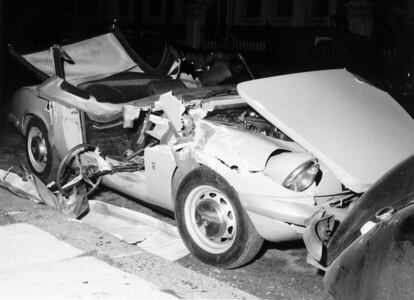It is a cruel paradox: Tara Browne, golden boy of Swinging London, has become immortalized by the accident that ended his life. Until then, he was mainly known as one of the heirs of the Guinness brewery; in fact, he would receive his share of that fortune when he turned 25. And he was only 21 on that December night in 1966 when, driving a Lotus Elan, he crashed on a London street. Weeks later, John Lennon used that misfortune, with the details carefully altered, for the fearless start of what would become A Day In the Life, later completed with a rhythmic occurrence by Paul McCartney. The song would close his most celebrated LP, Sgt. Pepper. Bolstered by a turbulent symphony orchestra, the Beatles seemed to portray the banality of everyday life and suggest a personal quest from artificial paradises (the BBC immediately banned their radiation).
All very unusual. Lennon did not like Tara, who was a friend of McCartney: in fact, the first LSD Paul took was a gift from Browne, who remained sober to intervene if the beatle skidded on a bad trip. No good deed goes unpunished: for a long time, Paul denied that the song was referring to Tara Browne.
It turns out that the future millionaire was more in tune with the Rolling Stones. A few months before he killed himself, he had celebrated his birthday with a party at his mother’s mansion in Ireland: he chartered a Caravelle to take a hundred of his London colleagues, including Mick Jagger and Brian Jones; Then another similar plane would arrive, with Parisian friends. Get an idea: the musical entertainment was provided by Lovin’ Spoonful, the great New York band.
Tara Browne had grown up between aristocracy and bohemia, dealing with figures such as John Huston, Lucien Freud and Brendan Behan. True, she also lived with leeches like Miguel Ferreras, her mother’s third husband, a supposed Cuban couturier. Years later, they discovered that he was a petty thief from Madrid, José María Ozores Laredo, who had avoided successive prison sentences by volunteering for the Blue Division and the Waffen SS; In 1946, he acquired his new identity with the birth certificate of a Havana native who would die of tuberculosis. A garment.
Some called Tara the Great Gatsby of pop London. But that suit didn’t fit him. Refractory to education, he acquired culture by osmosis: he was not illiterate but his writing resembled hieroglyphics. He felt immature when, in the middle of his affair with Amanda Lear, he must have watched her be seduced by Salvador Dalí. She had a musical culture, used to buying American records by the dozen, although she did not get involved in that world: she preferred motors and automobile competitions.
In some ways, Tara did leave a formidable musical legacy: she bought shares in Claddagh Records, a record label founded by her older brother, Garech Browne. In the late 1950s, both brothers toured Ireland with a professional tape recorder, recording folk songs and old people’s stories, something most shocking since the Guinness family was historically Anglophile and opposed to independence. Claddagh changed the way traditional Irish music was presented, including careful covers that avoided clichés. There, among many other artists and poets, the glorious Chieftains debuted.
Subscribe to continue reading
Read without limits
_

